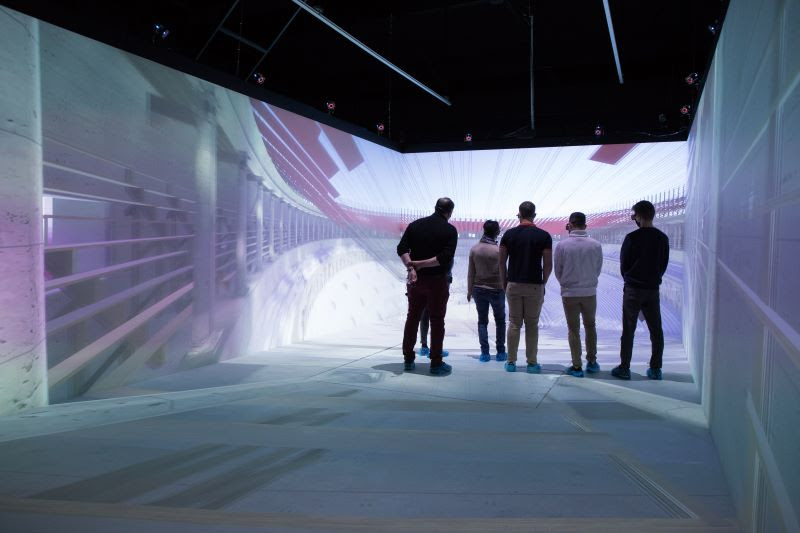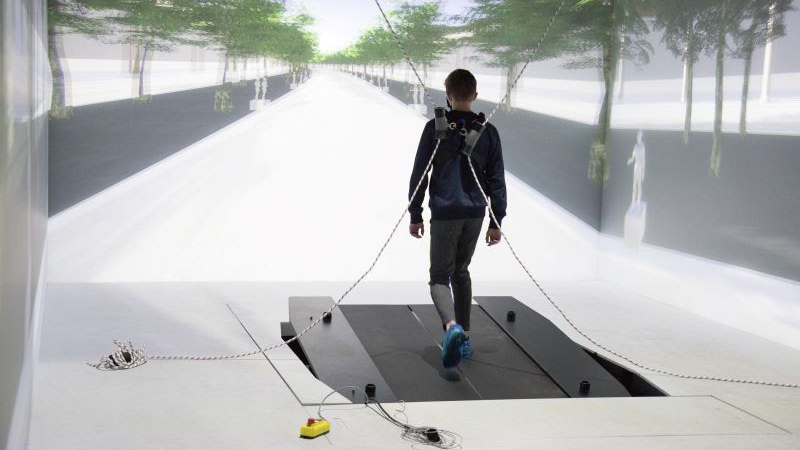ST Engineering Antycip recently enabled the University of Caen Normandy to offer users with reduced mobility full immersion in their virtual reality room (also called a CAVE).
Since 2014, the Interdisciplinary Center for Virtual Reality (CIREVE)—which supports researchers and businesses with the development, research and production of virtual reality content—has been using a bespoke CAVE installed by ST Engineering Antycip, which is the largest ever installed in a French university.
This CAVE allows users to interact with dynamic content projected on four walls of screens to ensure they have a fully immersed experience. As part of its research, the university subsequently installed a 3x2.5-meter treadmill to add a dimension of movement during use. This new configuration makes it possible to work on various research projects related to neurodegenerative diseases and disabling pathologies, such as Présages for Alzheimer's disease or Vitalized for the Ehlers-Danlos Syndrome.
[This Virtual Reality Suite Enables Carmakers in Three Cities to Collaborate]
In order to maintain an optimal level of realism, a CAVE must display the content at eye level. However, the size and elevation of the treadmill posed challenges for the accuracy of the projected information.
“Using the treadmill significantly reduced the immersive quality of the CAVE and, for safety reasons, we also had to fit safety rails on the sides to ensure the users’ stability,” explained Sophie Madeleine, director of CIREVE. “In addition, users with reduced mobility were unable to use the movement feature and for us, full accessibility was a must.”
“Antycip was able to overcome a number of challenges to meet the needs of our researchers: Installing the largest virtual reality room in France in a university environment, installing a pit in the floor of the CAVE to accommodate a treadmill with a force platform as well as designing a dual use of this space—with or without the treadmill—to take advantage of the entire projection surface.”

So, after carrying out structural and feasibility studies, ST Engineering Antycip decided to integrate the treadmill into the floor and to make it retractable, using jacks to position it at ground level or retract it under the floor when not in use.
Johan Besnainou, ST Engineering Antycip director for France and Spain, explained that it was necessary to consider the interaction between the device and its contents, but also to ensure that the structural integrity of the foundations and the device would not be compromised:
“For this project, we successfully demonstrated all of our skills as project managers to transform the specifications into a feasible job, managing the needs of the end customer and the constraints of external stakeholders, while also coordinating the teams on site.”
[JUST RELEASED: SCN Top 50 Systems Integrators 2022]
In particular, ST Engineering Antycip enlisted the help of construction specialist SPIE to create a floor cavity to accommodate the automated treadmill.
“Once again, we were able to bring together the right suppliers, select the right materials and overcome the difficulties to meet our client’s needs and expectations, despite the project’s great complexity," said Besnainou. "We are delighted that CIREVE and the university will now be able to enjoy the full benefits of this virtual reality room.
“This latest upgrade is the culmination of almost 10 years of collaboration between Antycip and our university, which has resulted in the creation of a virtual reality center at the forefront of European research.”
